#mongolian history
Text

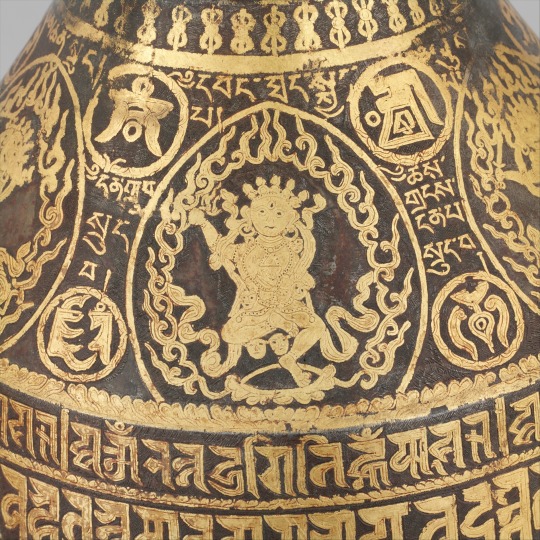
Gold damascened helmet, Mongolian, 15th-17th century
from The Metropolitan Museum of Art
191 notes
·
View notes
Text
Married Mongolian Women’s Hairstyle in the Yuan Dynasty
Mongolians have a long history of shaving and cutting their hair in specific styles to signal socioeconomic, marital, and ethnic status that spans thousands of years. The cutting and shaving of the hair was also regarded as an important symbol of change and transition. No Mongolian tradition exemplifies this better than the first haircut a child receives called Daah Urgeeh, khüükhdiin üs avakh (cutting the child’s hair), or örövlög ürgeekh (clipping the child’s crest) (Mongulai, 2018)
The custom is practiced for boys when they are at age 3 or 5, and for girls at age 2 or 4. This is due to the Mongols’ traditional belief in odd numbers as arga (method) [also known as action, ᠮᠣᠩᠭᠤᠯ, арга] and even numbers as bilig (wisdom) [ᠪᠢᠴᠢᠭ, билиг].
Mongulai, 2018.
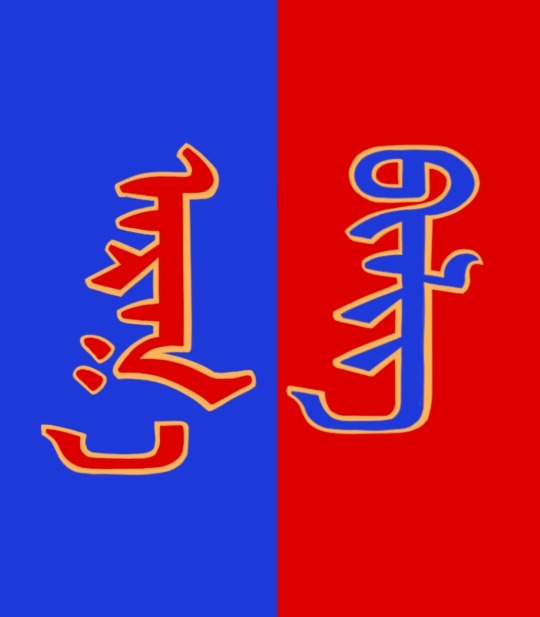
The Mongolian concept of arga bilig (see above) represents the belief that opposite forces, in this case action [external] and wisdom [internal], need to co-exist in stability to achieve harmony. Although one may be tempted to call it the Mongolian version of Yin-Yang, arga bilig is a separate concept altogether with roots found not in Chinese philosophy nor Daoism, but Eurasian shamanism.
However, Mongolian men were not the only ones who shaved their hair. Mongolian women did as well.
Flemish Franciscan missionary and explorer, William of Rubruck [Willem van Ruysbroeck] (1220-1293) was among the earliest Westerners to make detailed records about the Mongol Empire, its court, and people. In one of his accounts he states the following:
But on the day following her marriage, (a woman) shaves the front half of her head, and puts on a tunic as wide as a nun's gown, but everyway larger and longer, open before, and tied on the right side. […] Furthermore, they have a head-dress which they call bocca [boqtaq/gugu hat] made of bark, or such other light material as they can find, and it is big and as much as two hands can span around, and is a cubit and more high, and square like the capital of a column. This bocca they cover with costly silk stuff, and it is hollow inside, and on top of the capital, or the square on it, they put a tuft of quills or light canes also a cubit or more in length. And this tuft they ornament at the top with peacock feathers, and round the edge (of the top) with feathers from the mallard's tail, and also with precious stones. The wealthy ladies wear such an ornament on their heads, and fasten it down tightly with an amess [J: a fur hood], for which there is an opening in the top for that purpose, and inside they stuff their hair, gathering it together on the back of the tops of their heads in a kind of knot, and putting it in the bocca, which they afterwards tie down tightly under the chin.
Ruysbroeck, 1900
TLDR: Mongolian women shaved the front half of their head and covered it with a boqta, the tall Mongolian headdress worn by noblewomen throughout the Mongol empire. Rubruck observed this hairstyle in noblewomen (boqta was reserved only for noblewomen). It’s not clear whether all women, regardless of status, shaved the front of their heads after marriage and whether it was limited to certain ethnic groups.
When I learned about that piece of information, I was simply going to leave it at that but, what actually motivated me to write this post is to show what I believe to be evidence of what Rubruck described. By sheer coincidence, I came across these Yuan Dynasty empress paintings:

Portrait of Empress Dowager Taji Khatun [ᠲᠠᠵᠢ ᠬᠠᠲᠤᠨ, Тажи xатан], also known as Empress Zhaoxian Yuansheng [昭獻元聖皇后] (1262 - 1322) from album of Portraits of Empresses. Artist Unknown. Ink and color on silk, Yuan Dynasty (1260-1368). National Palace Museum in Taipei, Taiwan [image source].

Portrait of Unnamed Imperial Consort from album Portraits of Empresses. Artist Unknown. Ink and color on silk. Yuan Dynasty (1260-1368). National Palace Mueum in Taiper, Taiwan [image source].

Portrait of unnamed wife of Gegeen Khan [ᠭᠡᠭᠡᠨ ᠬᠠᠭᠠᠨ, Гэгээн хаан], also known as Shidibala [ᠰᠢᠳᠡᠪᠠᠯᠠ, 碩德八剌] and Emperor Yingzong of Yuan [英宗皇帝] (1302-1323) from album Portraits of Empresses. Artist Unknown. Ink and color on silk. Yuan Dynasty (1260-1368), early 14th century. National Palace Museum in Taipei, Taiwan [image source].
To me, it’s evident that the hair of those women is shaved at the front. The transparent gauze strip allows us to clearly see their hairstyle. The other Yuan empress portraits have the front part of the head covered, making it impossible to discern which hairstyle they had. I wonder if the transparent gauze was a personal style choice or if it was part of the tradition such that, after shaving the hair, the women had to show that they were now married by showcasing the shaved part.
As shaving or cutting the hair was a practice linked by nomads with transitioning or changing from one state to another (going from being single to married, for example), it would not be a surprise if the women regrew it.
References:
Mongulai. (2018, April 19). Tradition of cutting the hair of the child for the first time.
Ruysbroeck, W. V. & Giovanni, D. P. D. C., Rockhill, W. W., ed. (1900) The journey of William of Rubruck to the eastern parts of the world, 1253-55, as narrated by himself, with two accounts of the earlier journey of John of Pian de Carpine. Hakluyt Society London. Retrieved from the University of Washington’s Silk Road texts.
#mongolia#mongolian#yuan dynasty#mongolian history#chinese history#china#boqta#mongolian traditions#history#gegeen khan#empress dowager taji#mongol empire#William of Rubruck#historical fashion#arga bilig#central asia#central asian culture#mongolian culture#asia
275 notes
·
View notes
Text
On This Day In History
May 5th, 1260: Kublai Khan become leader of the Mongol Empire.
83 notes
·
View notes
Text
The clouds serve him as battle banners.
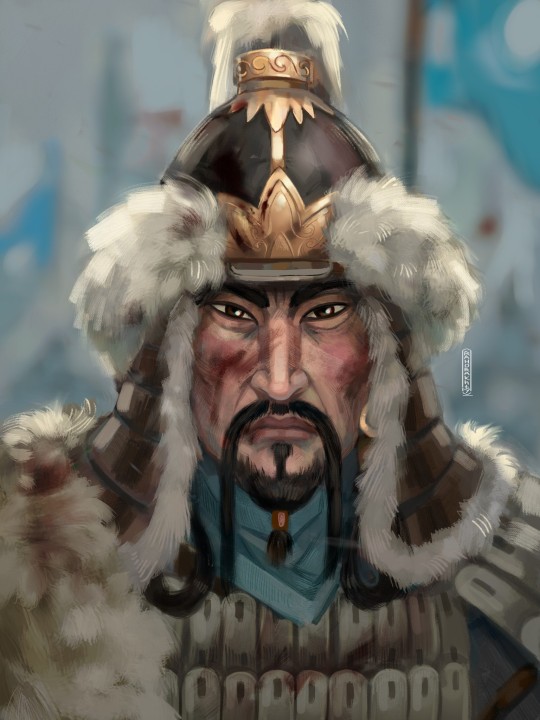
The sky is his flag.

The wind sings his hymns.

Batu.
#mongol empire#mongol history#mongolia#the mongol empire#batu khan#batu#the golden horde#art#mongolian history
8 notes
·
View notes
Text
Mongolian Archery/Headcanons
- In the Middle Ages, Mongolian archery held great military significance. The earliest recorded bow shot was made in 1226 as a stone inscription, by Yisüngge, Chinggis Khan's nephew, achieving a remarkable 335-fathom (about 575 yards) shot.
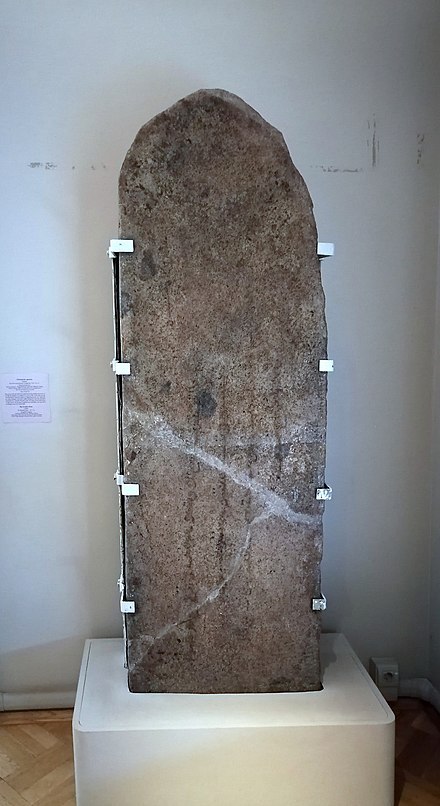
Stele of Yisüngge.
- Mongolian men were trained from a young age to become excellent marksmen, and archery played a crucial role in their military prowess.
- According to the Franciscan friar John of Plano Carpini, Mongols started shooting from the age of two, and they displayed excellent marksmanship skills from childhood to adulthood.
- Mongolian men dedicated much of their time to crafting their own arrows, which had diverse heads made from materials like bone or iron.
- The powerful tension of the bow caused it to spring back when unstrung, a challenge often mentioned in Mongolian epics as the heroic test of stringing a powerful bow.
Traditional Mongolian Bows and Arrows:
- Under the Qing Dynasty (1636–1912), all bannermen were required to undergo archery training. The military compound bows were typically about 1 1/4 meters (four feet) long, but longer bows up to two meters (six feet) were used for hunting.

- A grown man was required to handle a minimum pull weight of about 37 kilograms (80 pounds), while those participating in the imperial hunt needed to manage around 60 kilograms (133 pounds).
- Training included shooting from a standing position and also while galloping on horseback. Archers held the reins in their left hand or mouth while using their right hand to pull back the bow.

- The bows were constructed using a core made from goat horn or deer antler, covered with wood (larch, elm, or bamboo), and wrapped in animal tendons. The bows were powerful and required skill to string properly, making this task a distinguishing test of a hero's strength in Mongolian epics.
- The bowstrings were made of silk threads or leather wrapped in tendons, and arrows were crafted from materials like pine, birch, or willow. Arrowheads were made from deer antler, bone, or iron.
- Well-constructed compound bows and arrows were highly prized and fetched high prices. While powerful war bows were used for large game, simpler bows made of strips of fir or larch were used for small game.
Traditional Archery Techniques
- Mongolian archers used a unique technique of placing the arrow on the right, or outer, side of the bow. The arrow was held with the thumb and forefinger, and the bowstring was drawn with the thumb, protected by a heavy leather or polished stone ring.

- To release the arrow, the archer rolled the string off the ring. Skilled archers were trained not only to shoot from a standing position but also while galloping on horseback, using their right hand to draw the bow and holding the reins in the left hand or mouth.
Archery Competitions and Targets
- Archery competitions were an important aspect of Mongolian culture during religious rituals and Naadam games.
- In military competitions, the targets were made of sheepskin stretched over wooden frames or wooden balls placed on poles about 1.7 meters (5.5 feet) high. They were sometimes called "mangas" or monsters, as the Mongols found it disturbing to target human or animal figures.
- In Naadam games, archery was practiced using large, blunt ivory heads. The most common target was a pyramid or line of sur, made of leather straps rolled into a cylinder and filled with oak bark or leather, which the archers were required to knock over.


Decline and Revival of Archery
- By the late 19th century, firearms became more useful in hunting and warfare, causing a decline in archery competitions.
- Among the lamas of Khüriye (modern Ulaanbaatar), archery was replaced with shooting astragali (shagai) at a distance of 3 meters (9 feet) using horn or ivory bullets (ankle of sheep and goat) flicked by the middle finger from a wooden plank. This is because, due to their religious beliefs, they could not touch a weapon.

This is my own shagai set by the way!
- In the early 20th century, efforts were made to revive archery as a sport. In 1922, the army Naadam in Mongolia and in 1924, the Sur-Kharbaan (Archery) games in the Buryat Republic became annual events, marking the resurgence of archery as a recreational sport.
Changes in modern Archery
- In modern times, traditional Mongolian bows are still used in Mongolia, with archers using the traditional thumb technique.
- However, among Buryat and Inner Mongolian archers, European-style professional model bows and Western shooting styles have been adopted.
- The National Holiday Naadam rules now involve each man firing 40 arrows at a distance of 75 meters (246 feet), and women shooting 20 arrows at a distance of 60 meters (197 feet).
Headcanons
Mongolia obviously takes great pride in his cultural heritage and traditions. Archery is an integral part of his history and has been for centuries. It’s a skill that takes years to perfect - to become proficient one needs to develop both physical and mental control.
I think making bows would be a hobby of his! Not only does it keep him connected with his culture and history - as I previously mentioned, it's a skill. Bow-making/archery not only is a creative hobby, it's a physical and mental one too because of the patience and precision that is needed to create the bows/arrows, and of course, the archery itself is a mental and physical challenge!
The process of making his own bows can be both therapeutic and challenging at the same time. It requires a lot of patience and attention to detail while working with natural materials that may require specialised tools not commonly found today.
Nevertheless, he finds it to be an incredibly fulfilling experience to create something entirely by hand that is also functional and aesthetically pleasing. He enjoys painting/putting designs on them and he has quite a diverse set.
So really, bow making and archery for him:
Helps him stay in touch with his culture and history
A creative hobby
A hobby that requires mental fortitude/patience
A physical hobby
He's glad to have finally seen a resurgence and celebration of archery in his country after the rise of firearms kind of depleted it's use/popularity. It is now seen as a recreational sport in Mongolia and he treats it as a recreational sport too.
He takes pride watching participants demonstrate their skills during the Naadam Festival and other competitions where they strive to shoot targets from quite a distance away with incredible precision. The sound of the bowstring when an arrow releases - that twang sound- never gets old for him!
When he watches the younger generation take up archery, it does indeed remind him of his own experiences learning the skill as a child too.
I must say, he's still got a few tricks up his sleeve when it comes to horseback archery - even after all these years! At times, he still participates in local competitions just for fun (jock™)- he loves the the thrill of hitting a target while galloping alongside a horse.
It's definitely not something you can master overnight. Horseback archery requires an immense amount of control as well as skill from both the rider and the horse. Nevertheless, given his background as someone who understands strategy and has trained with bows since ancient times- participating is always an exciting prospect.
Sometimes he gets the chance to assist in judging in some archery competitions, which he always enjoys. He also enjoys reading about archery from different cultures too!
Of course with all of his responsibilities, he doesn't do this as often as he would like. However if you ask him about it, he'd probably do a bit of an info dump on you.
In essence, archery provides the perfect balance of discipline, creativity and physicality that he personally finds very fulfilling. Plus, it’s just plain fun!
#hetalia#aph mongolia#hws mongolia#Hetalia Mongolia#hetalia world stars#hetalia world series#hetalia world twinkle#historical hetalia#Aph Asia#Hws Asia#aph east asia#Hws east Asia#hetalia headcanons#Hetalia headcanon#OC Baatar Batbayar#Mongolia#Mongolian history#mongol history#Mongol Empire#Mongolian Empire#horseback archery#Archery#Mongolian Archery
37 notes
·
View notes
Text
KHUTULUN // PRINCESS OF THE MONGOLS
“She was a Mongol noblewoman and wrestler, the most famous daughter of Kaidu, a cousin of Kublai Khan. Her father was “most pleased by her abilities”, and she accompanied him on military campaigns. She was described by Marco Polo as a superb warrior, one who could ride into enemy ranks and snatch a captive as easily as a hawk snatches a chicken. She insisted that any man who wished to marry her must defeat her in wrestling. Winning horses from competitions and the wagers of would-be-suitors, it is said that she gathered a herd numbering ten thousand.”

4 notes
·
View notes
Text
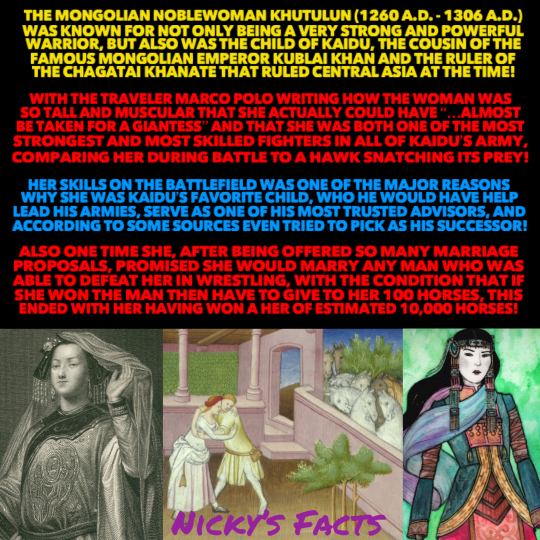
Khutulun was proving that women can be stronger then men 100 horses at a time!
🐴🇲🇳🐴
#history#khutulun#mongolia#kaidu#chagatai khanate#womens history#central asia#mongolian empire#princess#historical figures#strong women#medieval period#mongolian history#girl power#warrior woman#womens history month#kublai khan#fit girls#female empowerment#princesscore#horses#athletic women#medieval history#royalty#wrestling#khanate#military#nickys facts
6 notes
·
View notes
Photo
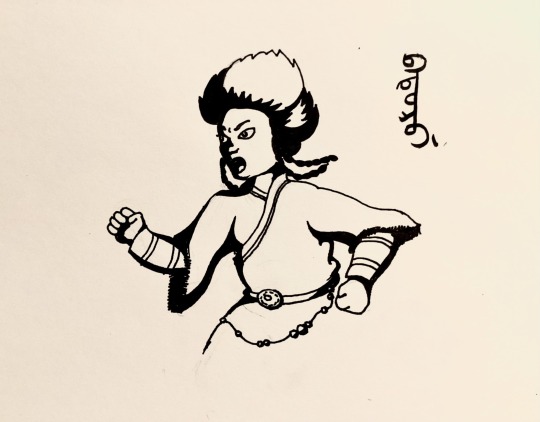
Day 29… has been a pretty rough day, so I bring you a simpler drawing of: Altani!
Altani was among the children fostered by Hoelun, the mother of Temujin, Genghis Khan, who took in relatives and war orphans to raise. Hoelun was also one of her son’s must trusted advisors, one of the women who governed his empire while he was away on campaign.
Altani shared a tent with Hoelun and her young grandson, Tolui. As the youngest son of Temujin and his Grand Empress, Börte, Tolui was an important child - and soon the target of an attack. A Tartar warrior took advantage of the tradition of sacred hospitality among the Mongols to seize the boy. He’d slipped past the guards… but he hadn’t reckoned on Altani. She dashed after him, grabbing his braids in one hand and his knife in the other, and kept her grip until help could arrive.
For her deed, Genghis Khan himself gave her the title of Bataar, or hero. In 1260, he announced her wedding to another young Bataar, Boroghul, a soldier who had saved the life of the Khan’s son Ogodei. He also gave a speech at the wedding, in which he emphasized that the husband and wife must rely on each other equally: they were two wheels pulling one cart.
15 notes
·
View notes
Text

This pic haunts me. Queen Genepil was pregnant.
4 notes
·
View notes
Link
IN 1178, A 17-YEAR-OLD MONGOL woman married a man she hardly knew. And while her husband traveled and fought and conquered, she ruled those who remained in Mongolia, managing every aspect of daily life in a massive nomadic camp. Commanders and shepherds alike reported to her, and she coordinated complex seasonal migrations of thousands of people and their livestock. At 28, she became the Grand Empress of the Mongol Empire; her name was Börte.
Börte’s husband, Chinggis Khan (also known, based on the Arabic transliteration, as Genghis Khan), receives all the glory for founding the largest contiguous land empire the world has ever known, but Börte and her immense contributions have been largely forgotten. While their husbands fought in distant, years-long military campaigns, Börte and other Mongol women kept the empire running.
10 notes
·
View notes
Text
Pop culture Chinggis Khaan:
"I am the Wrath of Heaven, and my destiny is to conquer the entire world, so I will invade China and Persia at the same time!"
Actual Chinggis Khaan:
"Ugh, that asshole massacred my trade caravan, so now I have to schlep all the way to Khurasan to go slap his nephew. Muqali, Alaqai, keep up the pressure against the Jin while I'm out in the west. Xuanzong has got to realise he's outclassed and accept becoming our vassal one of these days, right? Right?
1 note
·
View note
Text
All The Horses of Iceland - 3/5
Rating: 3/5
Pages: 112 (paperback)
Includes: horses I guess; vengeful ghosts; lyrical writing
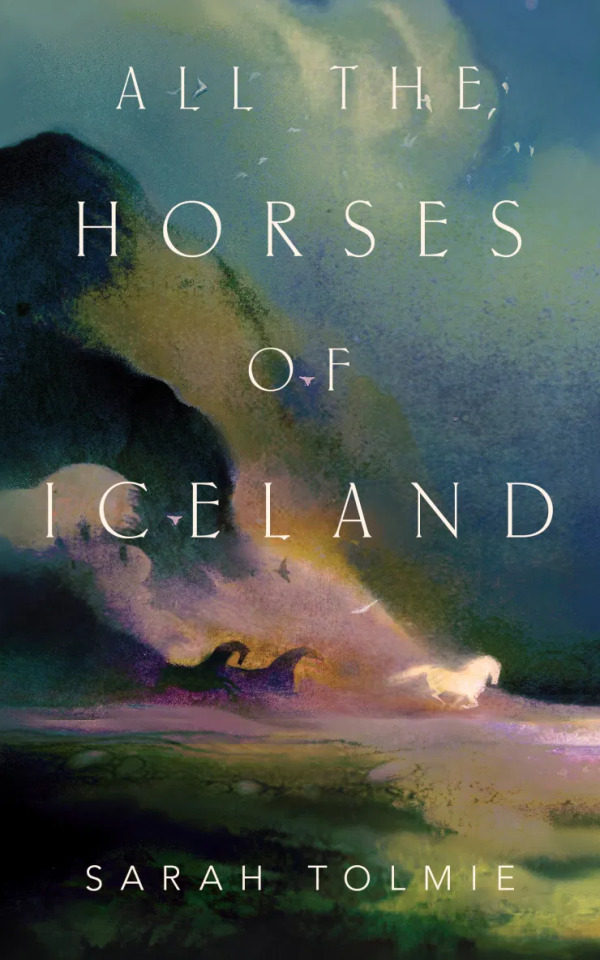
Novellas are my favorite format exactly because they're not that easy to write. A good novella doesn't shrink and doesn't stretch itself to fit into the format, it just is supposed to be that big. Usually, I think the problem is that stories shrink to be novellas -- AKA, the plot is rushed.
All The Horses of Iceland suffers of the opposite problem. The plot is too slow! It's like making dough and stretching it out so much until it becomes thin and breaks. The plot points stay for too long, it refuses to move foward to next adventure for our character.
When it does move quicker, it's masterful. Ms. Tolmie follows the journey of an Icelandic merchant who begins travelling with a Jewish trading group, which eventually culminates in the origin story of - you guessed it - all the horses of Iceland. Right there in the middle, though, while our main character is in what I'm assuming is the Mongol Empire, the story moves at a better pace, and it's so engaging! It's brimming with culture and magic, and watching our main character navigate that is incredibly entertaining.
But I think All The Horses of Iceland loses its sparkle around the half-way point. It was mostly pitched to me as a magical story, with fairytale vibes, but I struggled to see that, especially after this mark. Sure, the writing is lyrical, but the story mostly focuses on the character's personal life, instead of weaving an intricate account of the origin of - say it with me - all the horses of Iceland. It's also not that atmospheric at all, which I think is essential to a good fairy tale, as the writing's lyricism is more focused, again, on our protagonist. And the magic, both literal and metaphorical, disappears from the page after we leave the Mongol Empire.
In general, I think All The Horses of Iceland doesn't truly commit to its own mission. It tries to be a fairy tale, and succeds for about half of its page count, but then becomes more of a narrative of our protagonists life - which isn't particularly interesting - than anything else.
Reminds me of...
- The Book of a Thousand Days: deep dive into Middle-Age Mongolian culture and religion, specifically, BUT this one is YA, bigger, and has a romance subplot (which slays, btw)
- The Greenhollow Duology: fairy tale-esque vibes; lyrical writing; novella, BUT I thought this was one was better; it's gay; and also it's not an origin story
#all the horses of iceland#novella#fantasy books#books books books#book recommendations#book review#tor#historical fiction#the book of a thousand days#greenhollow duology#mongolian history#bookworm#books#fantasy#books and reading
0 notes
Text
the battle of buyur lake: today in the ming dynasty
tldr; in 1388 on may 17, ming forces led a wildly successful attack against the northern yuan

The story begins back in 1387. The current emperor of Ming China sends a military campaign of 200,000 soldiers to defeat the Uriankhai Mongols. The campaign was successful and resulted in the surrender of their enemy- thus, not long after in 1388, the emperor sent another campaign after the Northern Yuan.
150,000 soldiers, led by General Lan Yu, left to take on Uskhal Khan Tögüs Temür. They headed to Daning, following the steps of the previous campaign, and pressed on to Qingzhou, where they were told that the Yuan were encamped at Buyur Lake (also Buir Lake, from 捕鱼儿 bu yu er). Accordingly, they crossed the Gobi Desert until they arrived.

approx map of their journey by me; sorry if it formats weird
As they approached, they did not see the Yuan and considered returning home, but did not head back for fear of wasting their journey. Soon finding new intelligence as to their whereabouts, the Ming army attacked under cover of darkness, catching the Yuan off guard.
The battle was a huge success- Ming casualties were negligible and over 80,000 Yuan and 150,000 domesticated animals were captured, probably including Tögüs Temür's younger son.
However, Tögüs Temür himself was not to enjoy his escape for long. Fleeing the Ming army, he was found and killed by an Oirat. It wasn't long before the Mongol tribes lost their unity and the Oirats replaced the Yuan in power.
1 note
·
View note
Text
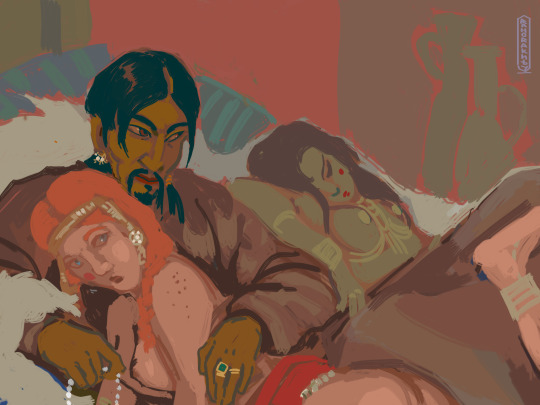
Batu with normal hairstyle? Wow.
Mongolian prince among Slavic and Chinese slaves. (I killed my hotd active with nomads and i'm not sorry.)

#batu#batu khan#art#mongolia#mongol history#mongol empire#mongolian history#nomadic#nomads#khan#batu sain khan
11 notes
·
View notes
Text
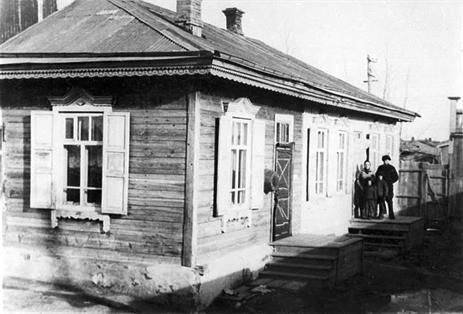
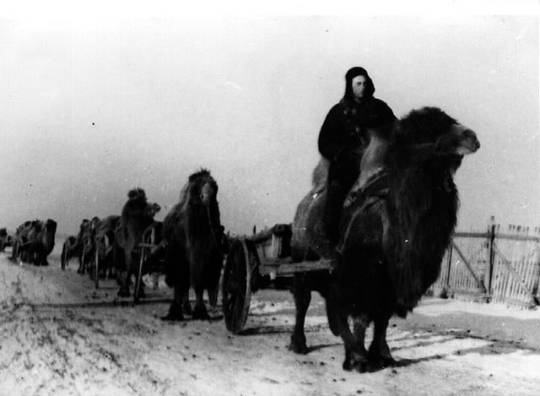
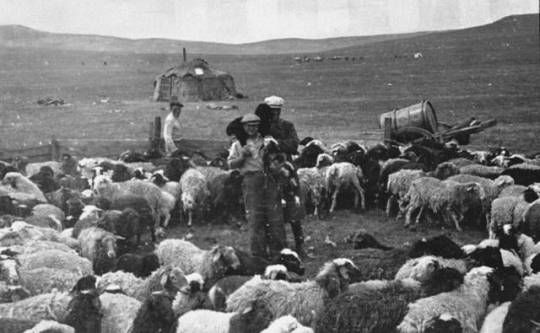


The Litvin family - Jewish farmers from Hailar, Manchuria, Chinese Inner Mongolia region
The Litvin family was originally from Irkutsk, Siberia. Life for Jews became increasingly harder there during WWI, so the family moved to Inner Mongolia where the existence of the Chinese Eastern Railway made the pastoral area promising.
The family patriarch, Simeon Litvin, was a very skilled farmer. He could accurately determine the age of a horse by its teeth and learned to speak the Mongolian and Tungus languages when communicating with Buryat and Tungus people. So when the family settled in the small town of Hailar on the CER, Simeon quickly made himself at home and gained friends among his suppliers, while still observing Jewish holidays, not working on Saturdays and regularly visiting the Hailar synagogue.
The situation changed dramatically when the Japanese occupied Manchuria in the early 1930s and established the puppet state of Manchukuo, after the Soviet Union sold its part of the railroad to the them. Japanese troops and police became increasingly aggressive, attacking, insulting, and even raping private citizens. They ruthlessly beheaded captives without trials and put their heads on public display. Chaim Litvin, the son of Simeon, had to endure brutal torture and years of imprisonment in a labor camp. After the prison was liberated, Chaim hurried home to Harbin, covering 700 kilometers in only three days. There, he began to breed cattle, got married and built a large farm together with his wife. Chaim worked until in 1959, in the People’s Republic of China, everything was confiscated. With the threat of being arrested by the Communist regime, he went with his family to Israel in 1962.
160 notes
·
View notes
Text
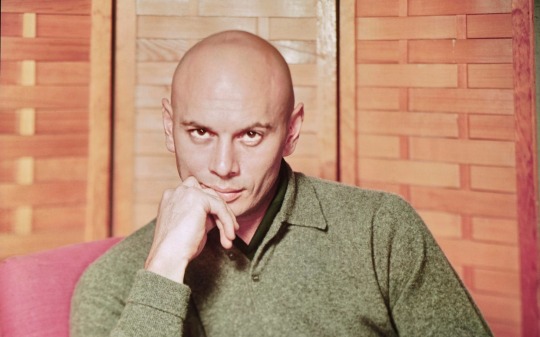
Yul Brynner (deceased)
Gender: Male
Sexuality: Bisexual
DOB: 11 July 1920
RIP: 10 October 1985
Ethnicity: Swiss-German, Russian, Buryat (Mongol), Romani
Nationality: Russian
Occupation: Actor, model, photographer, writer
#Yul Brynner#lgbt history#bisexuality#lgbt#qpoc#male#bisexual#1920#rip#historical#poc#asian#biracial#russian#mongolian#romani#actor#model#photographer#writer
68 notes
·
View notes